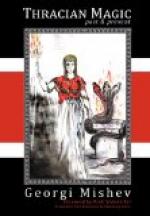|
This section contains 650 words (approx. 3 pages at 300 words per page) |

|
THRACIAN RIDER. The so-called Thracian Rider, a demigod who was the focus of a cult in ancient Thrace, is known principally from sculptures and inscriptions dating from the fourth century BCE to the early fourth century CE. In Greek and Latin inscriptions he is identified simply as "the hero" (hērōs or heros, usually, but also hērōn, heron, eron, etc.). According to Dimiter Detschew (1957, p. 200), the name of the Thracian horseman was probably related to the Thracian term for "hero," *ierus, or *iarus, which has Celtic parallels. If so, this linguistic fact reinforces the religious analogies between this Thracian type of divinity and the Greek heroes.
The oldest monuments of the Thracian Rider belong to the fourth century BCE, but his cult was particularly influential in Thrace and in Moesia Inferior (i.e., Lower Moesia, the region of Greco-Roman settlements on the western...
|
This section contains 650 words (approx. 3 pages at 300 words per page) |

|


